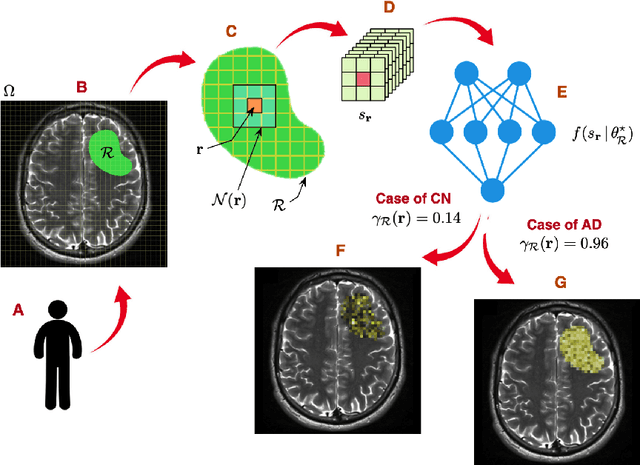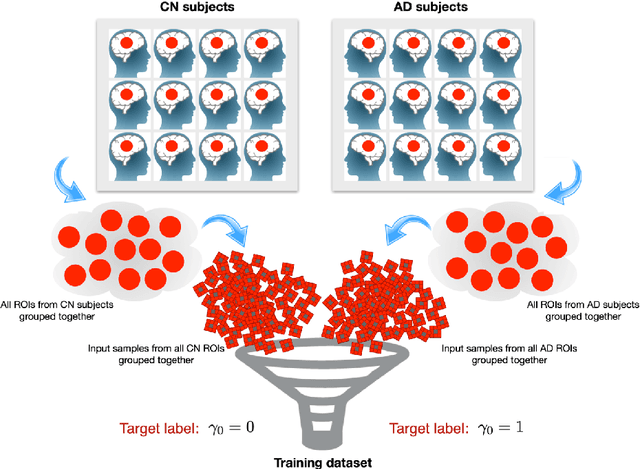Rinat Mukhometzianov
Towards a quantitative assessment of neurodegeneration in Alzheimer's disease
Nov 06, 2020



Abstract:Alzheimer's disease (AD) is an irreversible neurodegenerative disorder that progressively destroys memory and other cognitive domains of the brain. While effective therapeutic management of AD is still in development, it seems reasonable to expect their prospective outcomes to depend on the severity of baseline pathology. For this reason, substantial research efforts have been invested in the development of effective means of non-invasive diagnosis of AD at its earliest possible stages. In pursuit of the same objective, the present paper addresses the problem of the quantitative diagnosis of AD by means of Diffusion Magnetic Resonance Imaging (dMRI). In particular, the paper introduces the notion of a pathology specific imaging contrast (PSIC), which, in addition to supplying a valuable diagnostic score, can serve as a means of visual representation of the spatial extent of neurodegeneration. The values of PSIC are computed by a dedicated deep neural network (DNN), which has been specially adapted to the processing of dMRI signals. Once available, such values can be used for several important purposes, including stratification of study subjects. In particular, experiments confirm the DNN-based classification can outperform a wide range of alternative approaches in application to the basic problem of stratification of cognitively normal (CN) and AD subjects. Notwithstanding its preliminary nature, this result suggests a strong rationale for further extension and improvement of the explorative methodology described in this paper.
CapsNet comparative performance evaluation for image classification
May 28, 2018



Abstract:Image classification has become one of the main tasks in the field of computer vision technologies. In this context, a recent algorithm called CapsNet that implements an approach based on activity vectors and dynamic routing between capsules may overcome some of the limitations of the current state of the art artificial neural networks (ANN) classifiers, such as convolutional neural networks (CNN). In this paper, we evaluated the performance of the CapsNet algorithm in comparison with three well-known classifiers (Fisher-faces, LeNet, and ResNet). We tested the classification accuracy on four datasets with a different number of instances and classes, including images of faces, traffic signs, and everyday objects. The evaluation results show that even for simple architectures, training the CapsNet algorithm requires significant computational resources and its classification performance falls below the average accuracy values of the other three classifiers. However, we argue that CapsNet seems to be a promising new technique for image classification, and further experiments using more robust computation resources and re-fined CapsNet architectures may produce better outcomes.
Review. Machine learning techniques for traffic sign detection
Dec 13, 2017Abstract:An automatic road sign detection system localizes road signs from within images captured by an on-board camera of a vehicle, and support the driver to properly ride the vehicle. Most existing algorithms include a preprocessing step, feature extraction and detection step. This paper arranges the methods applied to road sign detection into two groups: general machine learning, neural networks. In this review, the issues related to automatic road sign detection are addressed, the popular existing methods developed to tackle the road sign detection problem are reviewed, and a comparison of the features of these methods is composed.
 Add to Chrome
Add to Chrome Add to Firefox
Add to Firefox Add to Edge
Add to Edge